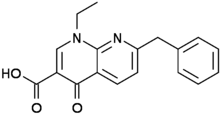polymath
Bluelight Crew
- Joined
- Nov 4, 2010
- Messages
- 1,884
According to the article found here, the simple compound 4-(diphenylmethyl)pyridine is as potent as cocaine in inhibiting dopamine reuptake. It also has some affinity to the 5HT and NE transporters. It's not even structurally related to any illegal drug.
Is it likely that unusual DRIs like this would be recreational? One sometimes hears of compounds like bupropion that inhibit dopamine reuptake but still have no 'abuse potential'. What factors in addition to DAT affinity contribute to the euphoria caused by cocaine-like compounds?
Is it likely that unusual DRIs like this would be recreational? One sometimes hears of compounds like bupropion that inhibit dopamine reuptake but still have no 'abuse potential'. What factors in addition to DAT affinity contribute to the euphoria caused by cocaine-like compounds?


